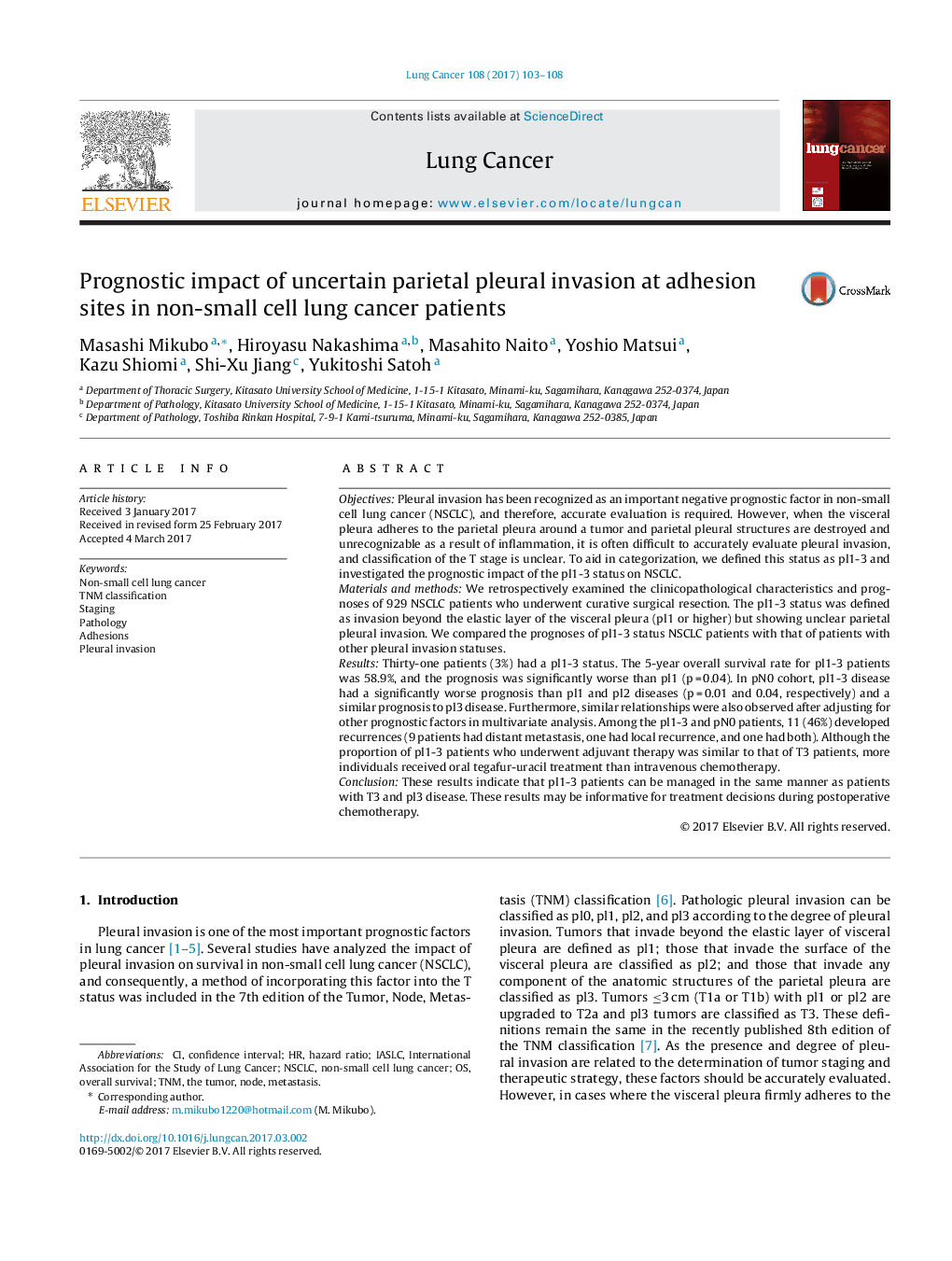| کد مقاله | کد نشریه | سال انتشار | مقاله انگلیسی | نسخه تمام متن |
|---|---|---|---|---|
| 5528184 | 1547959 | 2017 | 6 صفحه PDF | دانلود رایگان |
- The adhesions around tumors often destroy the structure of parietal pleura.
- In that case, it is difficult to determine the pleural invasion status.
- We examined the prognosis of NSCLC patients with firm adhesion to parietal pleura.
- The survival of these patients was equivalent to that of patients with pl3 status.
- Patients with unevaluable pleural invasion status should be managed as pl3 disease.
ObjectivesPleural invasion has been recognized as an important negative prognostic factor in non-small cell lung cancer (NSCLC), and therefore, accurate evaluation is required. However, when the visceral pleura adheres to the parietal pleura around a tumor and parietal pleural structures are destroyed and unrecognizable as a result of inflammation, it is often difficult to accurately evaluate pleural invasion, and classification of the T stage is unclear. To aid in categorization, we defined this status as pl1-3 and investigated the prognostic impact of the pl1-3 status on NSCLC.Materials and methodsWe retrospectively examined the clinicopathological characteristics and prognoses of 929 NSCLC patients who underwent curative surgical resection. The pl1-3 status was defined as invasion beyond the elastic layer of the visceral pleura (pl1 or higher) but showing unclear parietal pleural invasion. We compared the prognoses of pl1-3 status NSCLC patients with that of patients with other pleural invasion statuses.ResultsThirty-one patients (3%) had a pl1-3 status. The 5-year overall survival rate for pl1-3 patients was 58.9%, and the prognosis was significantly worse than pl1 (p = 0.04). In pN0 cohort, pl1-3 disease had a significantly worse prognosis than pl1 and pl2 diseases (p = 0.01 and 0.04, respectively) and a similar prognosis to pl3 disease. Furthermore, similar relationships were also observed after adjusting for other prognostic factors in multivariate analysis. Among the pl1-3 and pN0 patients, 11 (46%) developed recurrences (9 patients had distant metastasis, one had local recurrence, and one had both). Although the proportion of pl1-3 patients who underwent adjuvant therapy was similar to that of T3 patients, more individuals received oral tegafur-uracil treatment than intravenous chemotherapy.ConclusionThese results indicate that pl1-3 patients can be managed in the same manner as patients with T3 and pl3 disease. These results may be informative for treatment decisions during postoperative chemotherapy.
Journal: Lung Cancer - Volume 108, June 2017, Pages 103-108
